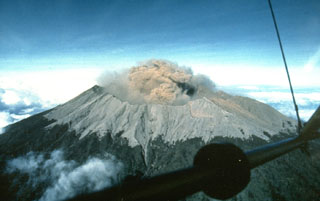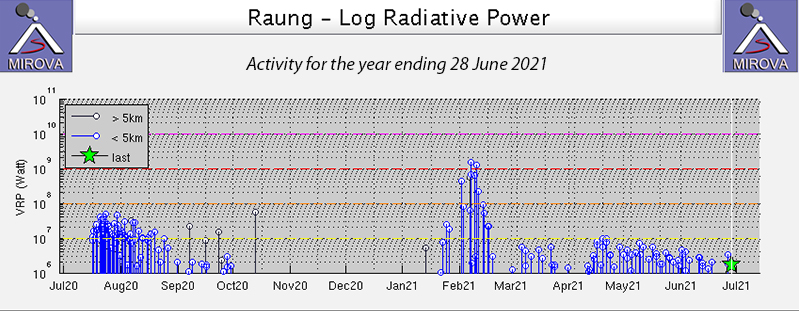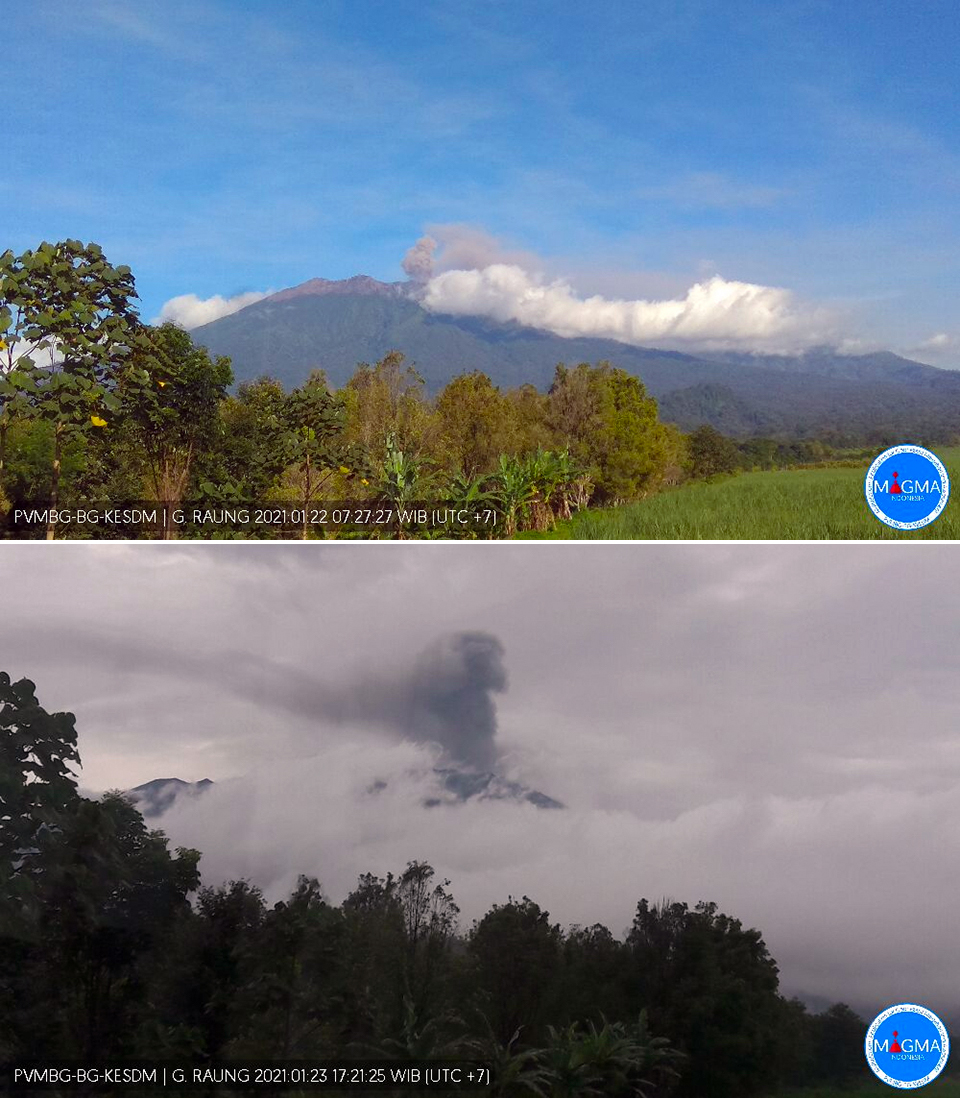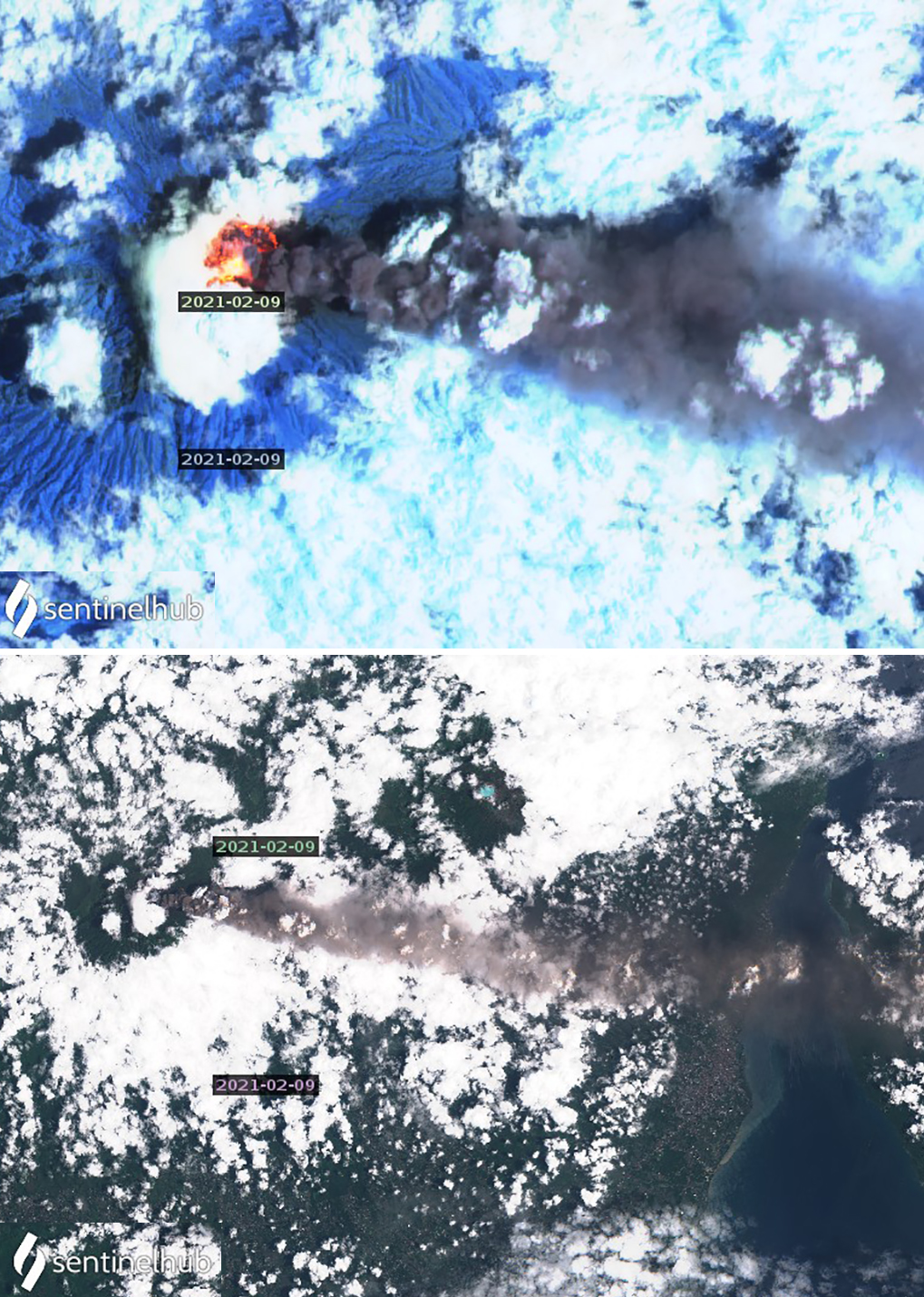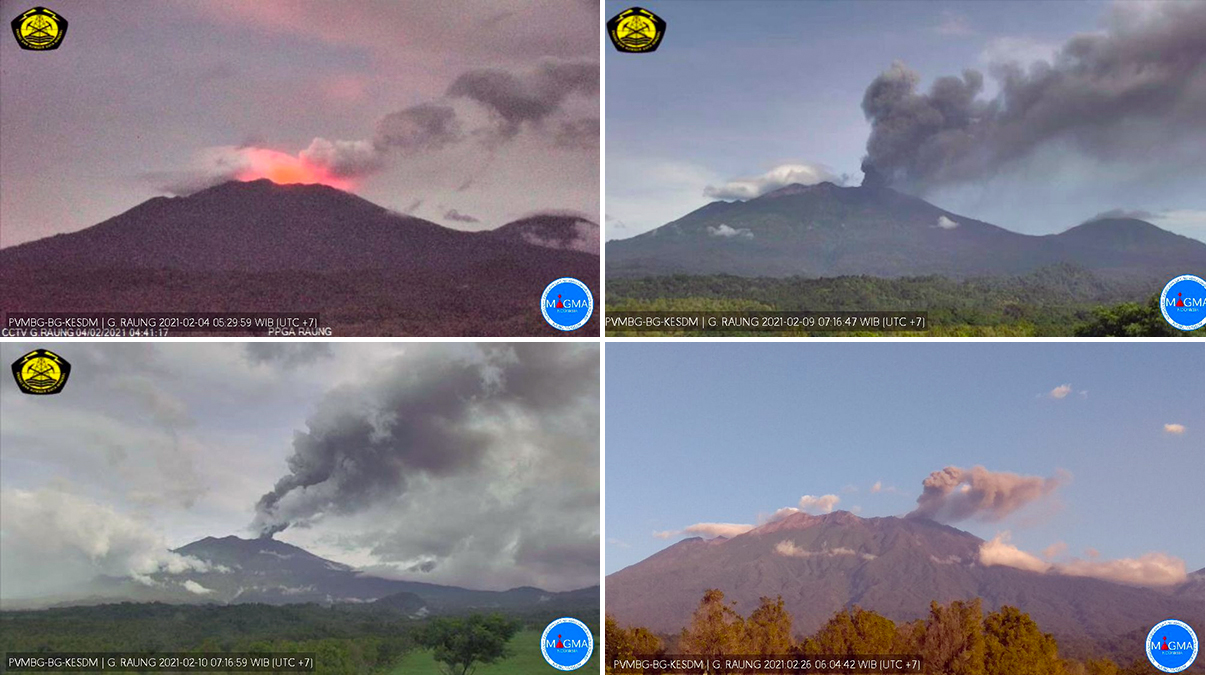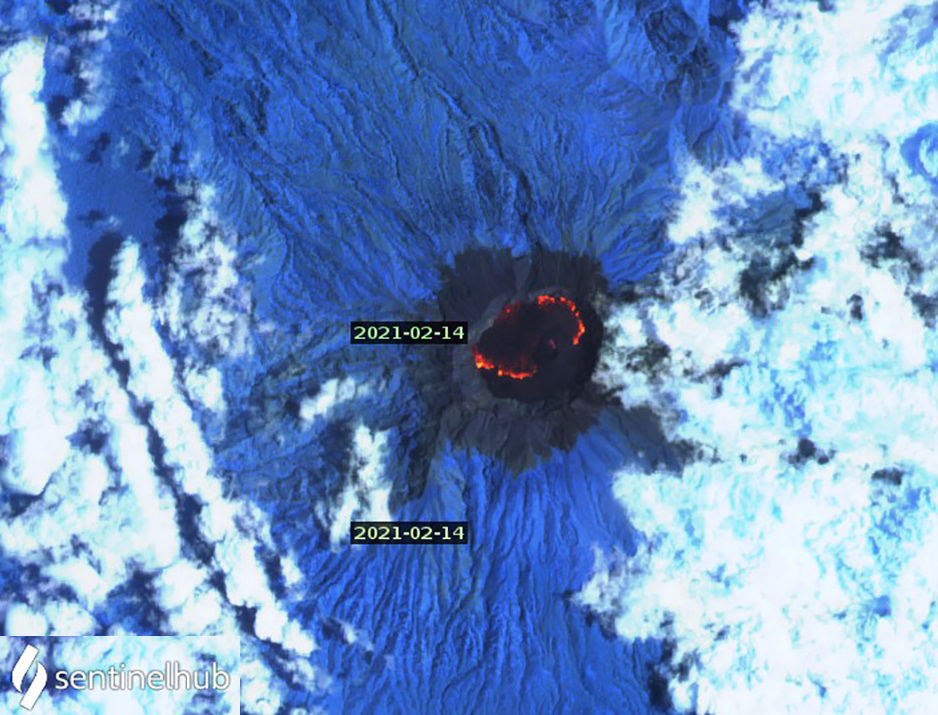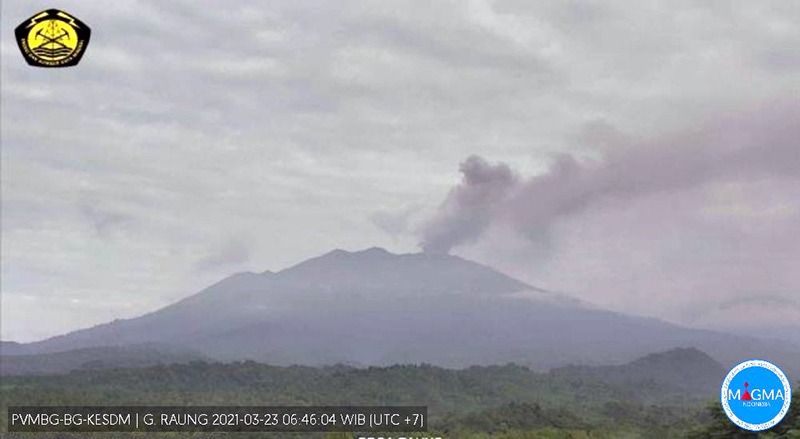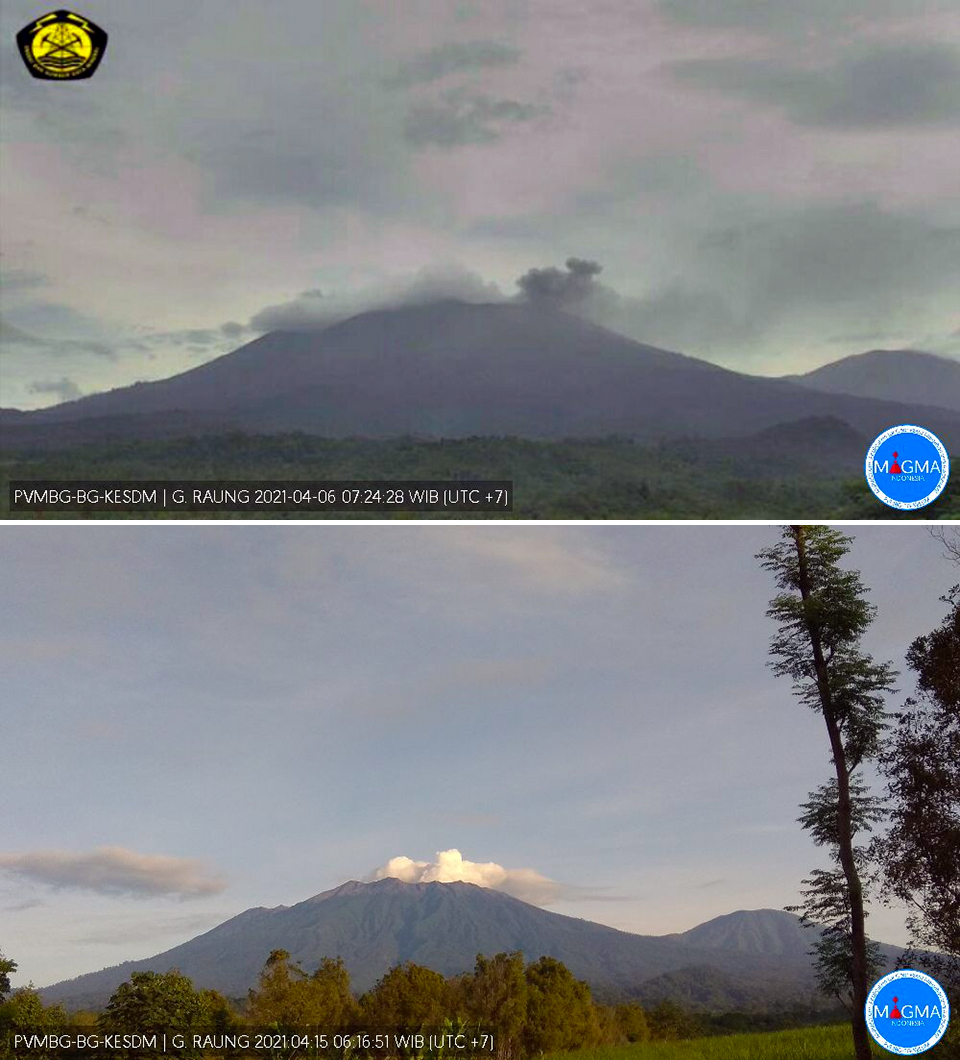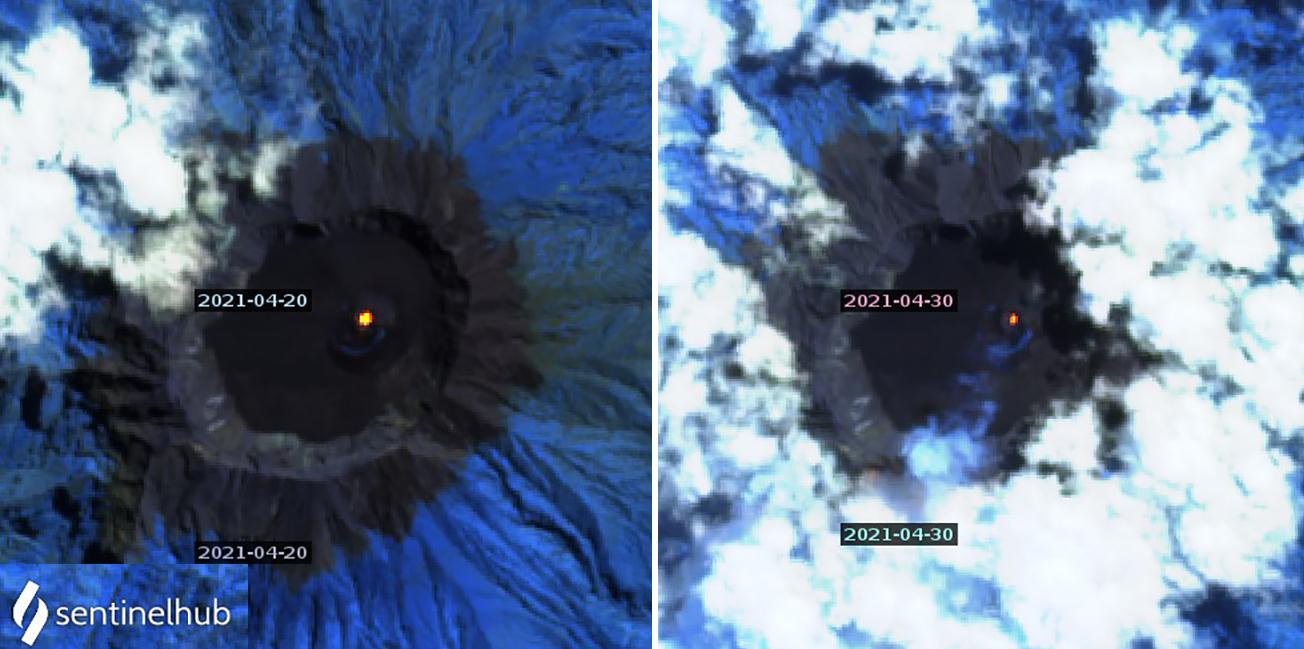Report on Raung (Indonesia) — July 2021
Bulletin of the Global Volcanism Network, vol. 46, no. 7 (July 2021)
Managing Editor: Edward Venzke.
Edited by A. Elizabeth Crafford.
Raung (Indonesia) Renewed thermal and explosive activity from late January into May 2021
Please cite this report as:
Global Volcanism Program, 2021. Report on Raung (Indonesia) (Crafford, A.E., and Venzke, E., eds.). Bulletin of the Global Volcanism Network, 46:7. Smithsonian Institution. https://doi.org/10.5479/si.GVP.BGVN202107-263340
Raung
Indonesia
8.119°S, 114.056°E; summit elev. 3260 m
All times are local (unless otherwise noted)
A massive stratovolcano in easternmost Java, Raung has over sixty recorded eruptions dating back to the late 16th Century. Explosions with ash plumes, Strombolian activity, and lava flows from a cinder cone within the 2-km-wide summit crater have been common. Pusat Vulkanologi dan Mitigasi Bencana Geologi (PVMBG, also known as the Indonesian Center for Volcanology and Geological Hazard Mitigation, CVGHM) has installed webcams to monitor activity in recent years. An eruption from late 2014 through August 2015 produced a large volume of lava within the summit crater and formed a new pyroclastic cone in the same location as the previous one. A smaller eruption during July-October 2020 was followed by explosions, ash emissions, and thermal anomalies during January-May 2021 which are covered in this report with information provided by PVMBG, the Darwin Volcanic Ash Advisory Center (VAAC), and several sources of satellite data.
The Alert Level at Raung was lowered from II to I on 27 November 2020 after the last reported activity in early October. Only occasional steam plumes were observed after that time until brown and gray emissions from the summit appeared on 21 January 2021; this led PVMBG to raise the Alert Level back to II. Daily seismicity and ash emissions increased in intensity and frequency with the strongest explosive activity reported during 7-12 February. Ash emissions continued daily throughout February and March but decreased gradually in plume height and ash content. A faint thermal anomaly appeared in satellite imagery inside the pyroclastic cone of the summit crater on 16 March, and similar anomalies were visible multiple times during April and early May. Intermittent ash emissions continued for the first half of April; only steam was observed after minor ash was detected on 14 April. The last thermal anomaly was observed on 15 May 2021. The MIROVA graph of Log Radiative Power for the year ending on 28 June 2021 clearly shows the July-October 2020 event followed by the latest activity that started in late January 2021, peaked in early February, and continued at lower thermal energy levels during March-May (figure 38).
After the last observations of ash in the summit emissions on 3 October 2020 and a weak thermal anomaly on the 7th (BGVN 45:12), no emissions were reported for the rest of October and November and seismicity decreased significantly. As a result, on 27 November PVMBG lowered the Alert Level from II to I (Normal). No activity was reported during December 2020, although satellite imagery on 21 December indicated substantial steam emissions from the summit crater. No further activity was reported until 21 January 2021 when harmonic tremors were detected along with gray and brown emissions seen rising 100-400 m above the crater. The Alert Level was raised back to II. Gray ash plumes 200-600 m high were reported daily through the remainder of January (figure 39), along with several hundred non-harmonic tremors each day. VONAs were issued daily from 21-24 and on 27 January, with continuous ash emissions reported rising to 3.4-3.9 km altitude and drifting E and SE. The Darwin VAAC reported that most of the emissions were not visible in satellite imagery, and their reports were based on ground observations from PVMBG, VONAs, or Pilot Reports.
Activity intensified significantly at the beginning of February 2021. PVMBG reported dense gray ash emissions rising 500 m above the summit on 1 February. Ash emissions increased to 1,000 m high the next day and continued daily through 5 February. The Darwin VAAC reported continuous ash emissions rising to 3.9-4.3 km altitude (600-1,000 m above the summit) and drifting NE and E during 1-3 and 6-7 February. On 6 and 7 February loud noises and incandescence were reported and on 7 February gray and black ash emissions rose 1,200 m above the summit and drifted ESE producing ashfall at the Raung Observatory in Sragi Village (25 km SE). Multiple pilot reports to the Darwin VAAC indicated ash emissions moving E at 4.9-7 km altitude throughout the day. The next day gray and black plumes rose 2,000 m above the crater and ashfall was again reported at the Raung Observatory from the ESE drifting plume.
The plumes on 9 February were 2,500 m above the summit drifting ESE and accompanied by loud noises. Sentinel-2 satellite imagery recorded a significant thermal anomaly and a large ash plume on 9 February (figures 40 and 41); the plume drifted more than 100 km ESE and was visible beyond the E coast of Java. During 10-12 February gray and black ash plumes rose 2,000 m above the crater each day. Continuous emissions rising to 5.5 km altitude (2,200 m above the summit) were reported in multiple VONA’s first on 8 February and continuing daily through 13 February. By 14 February a ring-shaped thermal anomaly was still visible inside the summit crater (figure 42). For the remainder of the month, plume height diminished to 300-1,000 m above the summit with occasional pulses that rose to 1,200 m. The Darwin VAAC reported daily ash emissions that rose to 4.3-4.9 km altitude and drifted N and E through 20 February. From 22-27 February daily emissions were noted at 3.9-4.3 km altitude drifting NE, E, and S.
Continuous tremor appeared on 1 February and increased significantly in amplitude from 1 to 5 mm. They rose the next day to 14 mm amplitude and remained at 13-16 m amplitude through 6 February. They dropped to 7 mm amplitude after that until 12 February and then returned to 1 mm amplitude for the remainder of the month. A small SO2 anomaly was recorded in satellite data on 1 February and a significant plume of gas appeared on 7 February that continued daily through 12 February (figure 43).
Steam and ash emissions in March 2021 were reported daily by PVMBG. During 1-3 March the gray plumes rose 200-600 m above the crater, then from 4 to 9 March they contained moderate to heavy ash content and rose 300-1,000 m above the crater. The Darwin VAAC reported ash emissions drifting E and NE at 3.9-4.3 km altitude during 3-10 March. Plume height varied from 500-1,200 m above the crater during 10-21 March with up to moderate ash density. On 13 March the ash plume was clearly discernable in satellite imagery drifting W at 4.3 km altitude (figure 44). On 22 March the ash plume rose to 900 m and small quantities of ash were reported at the Raung Observatory in Sragi. From 23 March through the end of the month gray ash plumes were reported at 50-1,200 m high with generally low to moderate ash density. VAAC reports issued during 23-27 March reported plumes at 3.7-4.6 km altitude drifting ESE, W, and NW (figure 45). They were clearly seen in visible satellite imagery on 26 March drifting NW at 3.7 km altitude. A single faint thermal anomaly was discernable in Sentinel-2 satellite imagery from the center of the pyroclastic cone inside the summit crater on 16 March.
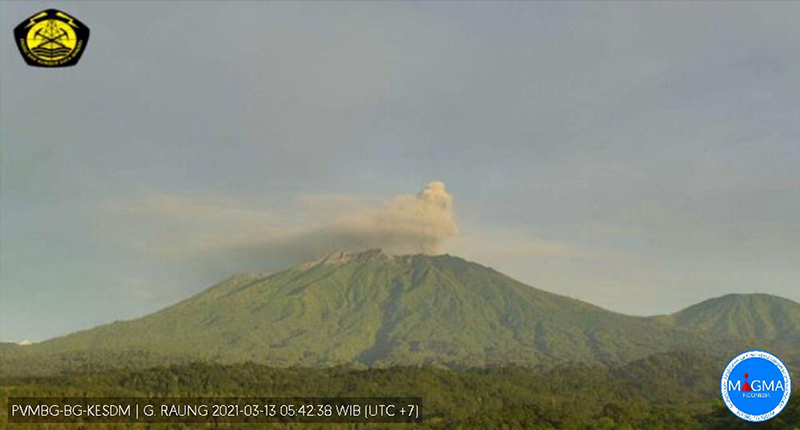 |
Figure 44. An ash plume at Raung on 13 March 2021 rose several hundred meters above the volcano and was clearly discernible in satellite images by the Darwin VAAC. Courtesy of PVMBG and MAGMA. |
Emissions from Raung contained ash during the first half of April 2021. The plumes were gray or white and gray and rose 50-600 m above the summit (figure 46). The Darwin VAAC reported a minor ash plume that rose to 2.4 km altitude and drifted N on 12 April. A report by PVMBG of gray plumes rising 50-400 m high on 14 April was the last indication of ash emissions for the month. For the remainder of the month only steam plumes were seen, rising 75-500 m above the summit. A webcam image taken after dark on 17 April showed incandescence at the summit crater. Two clear satellite images on 20 and 30 April revealed small thermal anomalies inside the pyroclastic cone in the summit crater (figure 47). A small SO2 plume was detected by satellite instruments on 29 April.
For most of May 2021 cloudy skies obscured views of the volcano. Occasionally white steam plumes were observed rising up to 400 m above the summit. On 5, 10, and 15 May weak thermal anomalies located inside the pyroclastic cone in the summit crater appeared in satellite images. Distinct SO2 anomalies appeared more frequently during May than any other month of the reporting period except February (figure 48). During June 2021, no thermal anomalies were present in the five satellite images with clear views of the summit. The summit was cloudy in about half of the webcam images taken during June; when visible, white steam plumes were noted that rose generally 50-200 m except on 22 June when they rose 100-400 m high.
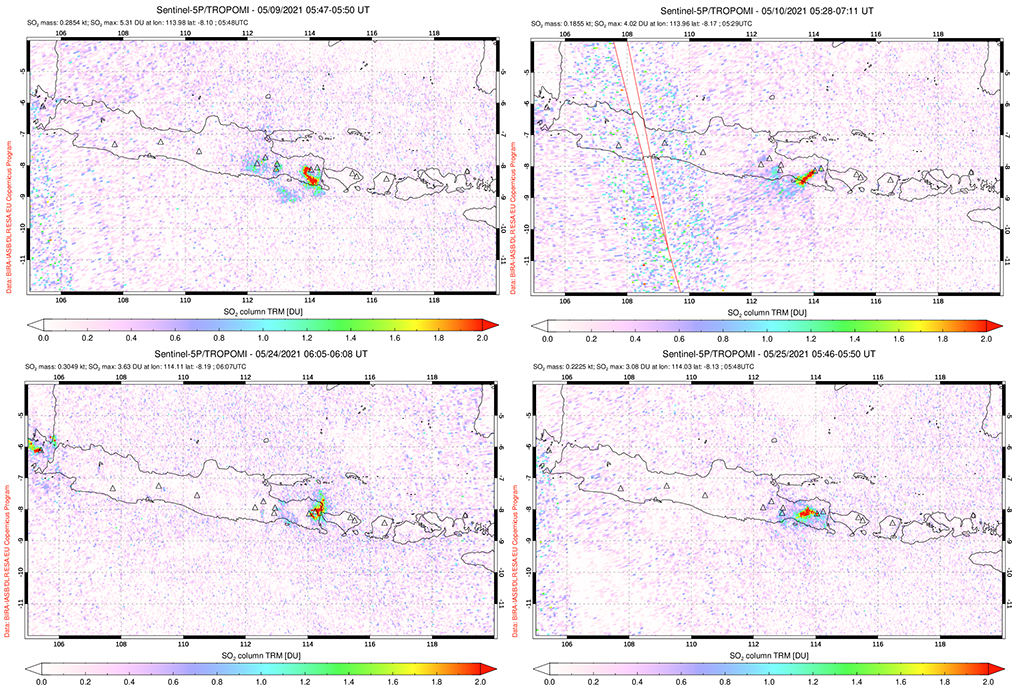 |
Figure 48. Distinct SO2 plumes drifted in multiple directions from Raung on several days during May 2021 including on 9, 10, 24, and 25 May. Courtesy of NASA Global Sulfur Dioxide Monitoring Page. |
Geological Summary. Raung, one of Java's most active volcanoes, is a massive stratovolcano in easternmost Java that was constructed SW of the rim of Ijen caldera. The unvegetated summit is truncated by a dramatic steep-walled, 2-km-wide caldera that has been the site of frequent historical eruptions. A prehistoric collapse of Gunung Gadung on the W flank produced a large debris avalanche that traveled 79 km, reaching nearly to the Indian Ocean. Raung contains several centers constructed along a NE-SW line, with Gunung Suket and Gunung Gadung stratovolcanoes being located to the NE and W, respectively.
Information Contacts: Pusat Vulkanologi dan Mitigasi Bencana Geologi (PVMBG, also known as Indonesian Center for Volcanology and Geological Hazard Mitigation, CVGHM), Jalan Diponegoro 57, Bandung 40122, Indonesia (URL: http://www.vsi.esdm.go.id/); MAGMA Indonesia, Kementerian Energi dan Sumber Daya Mineral (URL: https://magma.esdm.go.id/v1); MIROVA (Middle InfraRed Observation of Volcanic Activity), a collaborative project between the Universities of Turin and Florence (Italy) supported by the Centre for Volcanic Risk of the Italian Civil Protection Department (URL: http://www.mirovaweb.it/); NASA Global Sulfur Dioxide Monitoring Page, Atmospheric Chemistry and Dynamics Laboratory, NASA Goddard Space Flight Center (NASA/GSFC), 8800 Greenbelt Road, Goddard, Maryland, USA (URL: https://so2.gsfc.nasa.gov/); Sentinel Hub Playground (URL: https://www.sentinel-hub.com/explore/sentinel-playground).

